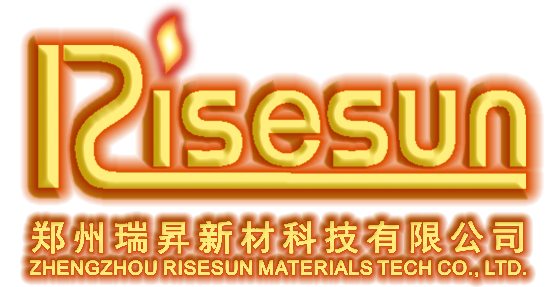05
2025
-
02
Unlocking the Power: The Benefits of Silicon Carbide Elements in Electric Heating Devices
Unlocking the Power: The Benefits of Silicon Carbide Elements in Electric Heating Devices Table of Contents 1. Introduction to Silicon Carbide in Electric Heating 2. What is Silicon Carbide? 3. Advantages of Silicon Carbide Elements 3.1 High Temperature Resistance 3.2 Energy Efficiency 3.3 Long Lifespan 3.4 Cost-Effectiveness 4. Ap
Unlocking the Power: The Benefits of Silicon Carbide Elements in Electric Heating Devices
Table of Contents
- 1. Introduction to Silicon Carbide in Electric Heating
- 2. What is Silicon Carbide?
- 3. Advantages of Silicon Carbide Elements
- 4. Applications of Silicon Carbide in Electric Heating Devices
- 5. Comparison with Conventional Heating Elements
- 6. The Future of Silicon Carbide Technology in Electric Heating
- 7. Frequently Asked Questions
- 8. Conclusion
1. Introduction to Silicon Carbide in Electric Heating
Electric heating devices have become an integral part of various industries, optimizing energy consumption while maximizing output. At the heart of this innovation lies **Silicon Carbide (SiC)**, a semiconductor that has revolutionized the efficiency and performance of electric heating systems. This article delves into the numerous benefits of SiC elements, demonstrating their critical role in enhancing electric heating technology.
2. What is Silicon Carbide?
Silicon Carbide, a compound of silicon and carbon, is renowned for its exceptional thermal conductivity and electrical properties. Found primarily in nature as the mineral moissanite, SiC can be synthetically produced through high-temperature processes. Its unique characteristics make it suitable for high-performance applications, particularly in electric heating devices.
3. Advantages of Silicon Carbide Elements
The integration of Silicon Carbide in electric heating devices presents several noteworthy advantages:
3.1 High Temperature Resistance
One of the standout features of SiC is its incredible resistance to high temperatures. Unlike traditional materials, which can degrade or lose effectiveness when subjected to elevated temperatures, SiC maintains its integrity, ensuring consistent performance even under extreme conditions. This property is vital for applications that require reliable heating over extended periods.
3.2 Energy Efficiency
Energy efficiency is a crucial concern in today’s eco-conscious market. Silicon Carbide elements exhibit lower energy losses compared to conventional heating materials, resulting in reduced electricity consumption. This efficiency translates into significant cost savings for users and a decreased environmental footprint.
3.3 Long Lifespan
The durability of Silicon Carbide components is another compelling advantage. Due to their resistance to thermal shock and oxidation, SiC elements have a longer lifespan than traditional heating elements. This longevity minimizes replacement costs and downtime, making SiC a wise investment in electric heating technology.
3.4 Cost-Effectiveness
While the initial investment in Silicon Carbide technology may be higher, the long-term savings it offers make it cost-effective. Users benefit from lower operational costs, fewer maintenance issues, and longer replacement cycles. When considering the total cost of ownership, SiC elements provide excellent value.
4. Applications of Silicon Carbide in Electric Heating Devices
Silicon Carbide elements find applications across various electric heating devices, including:
- **Industrial Heaters:** Used in manufacturing processes requiring precise temperature control, SiC elements improve efficiency and reduce production costs.
- **Home Appliances:** From electric stoves to toasters, SiC components enhance the performance and safety of domestic heating devices.
- **Automotive Applications:** Electric vehicles (EVs) benefit from SiC technology, as it aids in effective heating systems that support battery efficiency and longevity.
- **Aerospace and Defense:** The high-temperature resistance of SiC makes it suitable for applications in extreme environments, ensuring reliability in critical operations.
5. Comparison with Conventional Heating Elements
When comparing Silicon Carbide elements with conventional heating materials such as nichrome and Kanthal, several distinctions arise:
- **Temperature Tolerance:** SiC can operate at much higher temperatures without degradation, while conventional materials may fail under similar conditions.
- **Efficiency:** SiC elements present lower resistance, resulting in higher efficiency and reduced energy losses compared to traditional counterparts.
- **Durability:** The lifespan of SiC components far exceeds that of conventional materials, offering greater reliability and reducing the need for frequent replacements.
These differences highlight the superiority of Silicon Carbide technology in electric heating devices.
6. The Future of Silicon Carbide Technology in Electric Heating
As technology continues to evolve, the future of Silicon Carbide in electric heating devices looks promising. Ongoing research aims to improve the manufacturing processes of SiC elements, making them more accessible and affordable. Additionally, as industries shift towards sustainable practices, the demand for energy-efficient solutions will likely propel SiC technology to the forefront of electric heating innovations.
Innovative developments in SiC manufacturing techniques could lead to enhanced performance metrics and broader applications across various sectors, solidifying its position as a critical component in future electric heating technologies.
7. Frequently Asked Questions
1. What are the main benefits of using Silicon Carbide in electric heating devices?
Silicon Carbide offers high temperature resistance, energy efficiency, a longer lifespan, and cost-effectiveness compared to conventional materials.
2. How does Silicon Carbide enhance energy efficiency?
SiC elements exhibit lower energy losses due to their superior conductivity, leading to reduced electricity consumption and lower operational costs.
3. Are Silicon Carbide heating elements suitable for high-temperature applications?
Yes, SiC heating elements are specifically designed to withstand extreme temperatures without degradation, making them ideal for high-temperature applications.
4. What industries benefit from Silicon Carbide technology?
Industries such as manufacturing, automotive, aerospace, and home appliances greatly benefit from the integration of Silicon Carbide in electric heating devices.
5. Is Silicon Carbide technology cost-effective in the long run?
While the initial investment may be higher, the long-term savings from reduced operational costs and longer lifespan make SiC technology a cost-effective solution.
8. Conclusion
The integration of **Silicon Carbide elements in electric heating devices** has unlocked a new realm of possibilities, enhancing efficiency, durability, and performance. As industries continue to seek innovative solutions for energy consumption and sustainability, SiC technology stands out as a frontrunner. Its remarkable attributes not only provide immediate benefits but also pave the way for a more energy-efficient future. Embracing Silicon Carbide technology is not just a choice; it is a strategic investment in the evolution of electric heating solutions.



